Think that you may own a portrait of Daniel Boone? We authenticate, appraise and issue Certificates of Authenticity (COA) for all portraits of Daniel Boone.

Portrait of Daniel Boone by Chester Harding (1820) *This portrait by Chester Harding is the only known portrait of Daniel Boone that was made from life. At the time, Boone was 85 years old and only months away from death. He had to be steadied by a friend in order to sit for this portrait while the artist worked.

Statue of Daniel Boone, made for the St. Louis Exposition, by Enid Yandell
Daniel Boone was an American pioneer and hunter whose frontier exploits made him one of the first folk heroes of the United States. Boone is most famous for his exploration and settlement of what is now the U.S. state of Kentucky, which was then beyond the western borders of the Thirteen Colonies. Despite resistance from American Indians, for whom Kentucky was a traditional hunting ground, in 1775 Boone blazed the Wilderness Road through the Cumberland Gap and into Kentucky. There he founded Boonesborough, one of the first English-speaking settlements beyond the Appalachian Mountains. Before the end of the 18th century, more than 200,000 people entered Kentucky by following the route marked by Boone.

Daniel Boone Woodcut, Alonzo Chappel (1861)
Boone was a militia officer during the American Revolutionary War (1775–1783), which in Kentucky was fought primarily between settlers and British-allied American Indians. Boone was captured by Shawnees in 1778 and adopted into the tribe, but he escaped and continued to help defend the Kentucky settlements. He was elected to the first of his three terms in the Virginia General Assembly during the war, and fought in the Battle of Blue Licks in 1782, one of the last battles of the American Revolution. Boone worked as a surveyor and merchant after the war, but he went deep into debt as a Kentucky land speculator. Frustrated with legal problems resulting from his land claims, in 1799 Boone resettled in Missouri, where he spent his final years.

Portrait of Daniel Boone, artist unknown
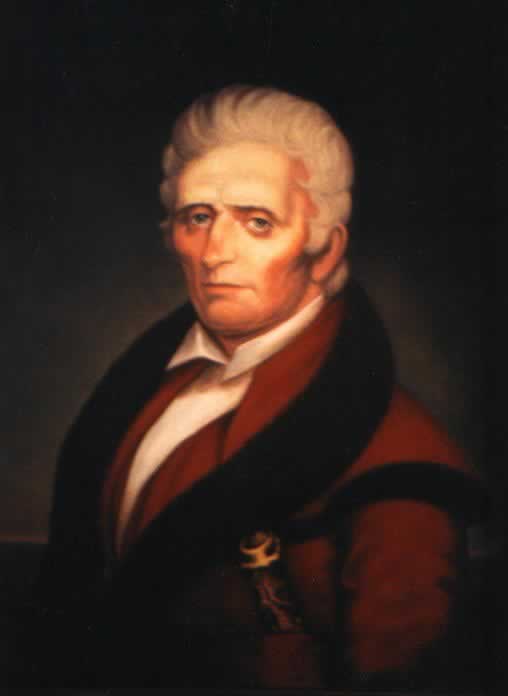
Daniel Boone after Harding, artist unknown
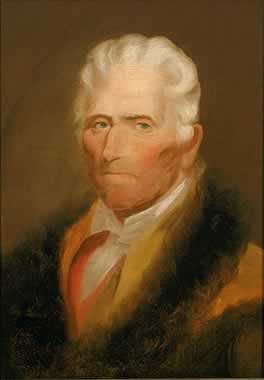
Portrait of Daniel Boone, 1820, artist unknown
Boone remains an iconic, if imperfectly remembered, figure in American history. He was a legend in his own lifetime, especially after an account of his adventures was published in 1784, making him famous in America and Europe. After his death, he was frequently the subject of tall tales and works of fiction. His adventures—real and legendary—were influential in creating the archetypal Western hero of American folklore. In American popular culture, he is remembered as one of the foremost early frontiersmen, even though the mythology often overshadows the historical details of his life.
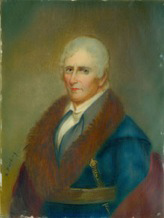
Daniel Boone Miniature after Chester Harding
The only known portrait of Daniel Boone that was painted while the frontiersman was alive was painted by Chester Harding. Today, there exists some 8 versions of this painting, and as a result, there is some confusion regarding which one was the original.
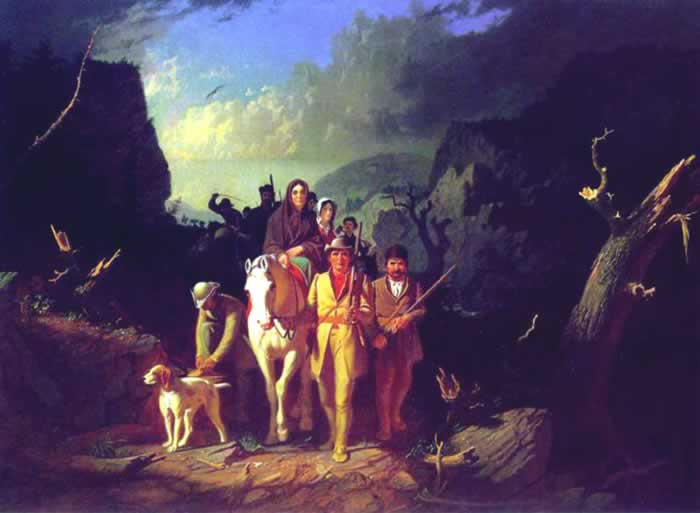
Daniel Boone Escorting Settlers Through Cumberland Gap, 1851-1852, by George Caleb Bingham
Harding went to considerable lengths to capture this historic figure in portrait, as his own personal account from 1820 conveys:
"In June of this year I made a trip of one hundred miles for the purpose of painting the portrait of old Colonel Daniel Boone. I had much trouble finding him. He was living, some miles from the main road, in one of the cabins of an old block-house which was built for the protection of the settlers against the incursion of the Indians. I found that the nearer I got to his dwelling, the less was known of him. Within two miles of his house, I asked a man to tell me where Colonel Boone lived. He said he did not know any such man. "Why, yes you do," said his wife. "It is that white-headed old man who lives on the bottom, near the river." A good illustration of the proverb that a prophet is not without honor, save in his own country."
Furthermore, Harding's memoirs of this trip also reveal that this was likely the first time that he ever sat for a portrait, in that the aged explorer was astonished at his own likeness, as were his family members, including his 18 grandchildren. In essence, it is not likely that there were any portraits made of Boone as a young man. This however, is debatable since, at 86 years old, Boone may have been entering stages of Alzheimer's or dementia, he may not have remembered ever having sat for a portrait at that time.
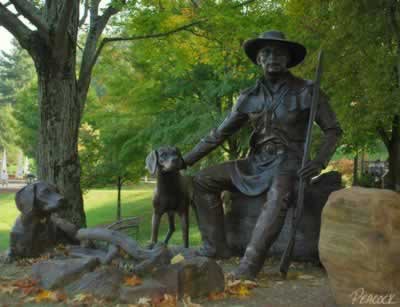
Statue of Daniel Boone, Appalachian State University
[1]Harding's own personal accounts also entail that he created pencil study of Boone as well as a smaller painting while creating this full sized portrait. Where are they today? Perhaps hanging in your home or filed away in centuries old paperwork or a hidden notebook. There are also possibly a number of paintings created in the last century of Boone that were inspired by Hollywood; in short, portraying Boone with a coonskin cap (he never truly wore one). These may hold value to collectors of kitsch, but the truly valuable Boone portraits would be those painted during his lifetime. To find a true depiction of Boone painted during his lifetime would be an extraordinary find.
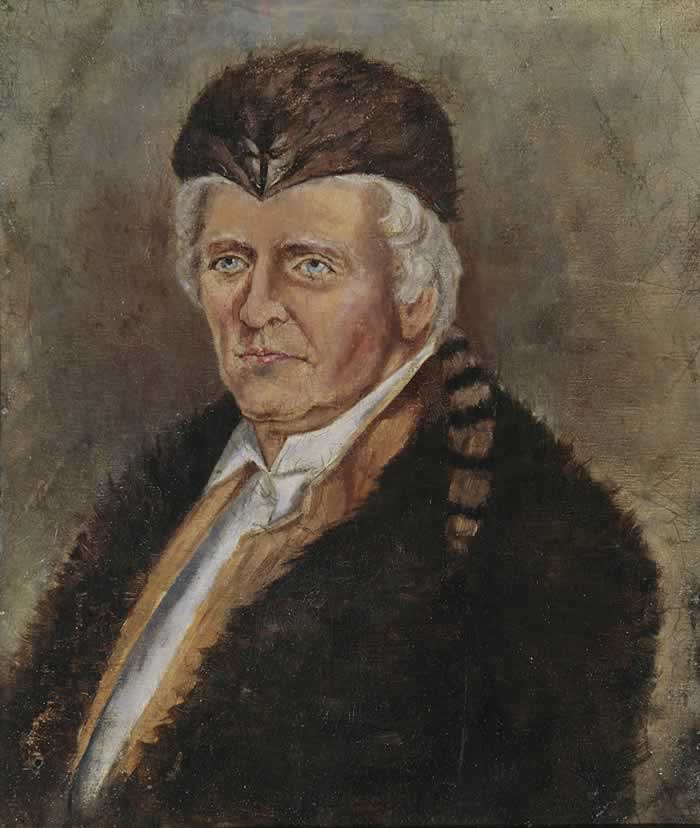
Daniel Boone, contemporary portrait inspired by Hollywood
Still wondering about a mysterious portrait in your family collection? Contact us...it could be a portrait of Daniel Boone.
[1] excerpt taken from "Chester Harding and the Life Portrait of Daniel Boone" by Leah Lipton, American Art Journal, Vol. 16, No. 3 (Summer 1984), p.p. 4-19.
